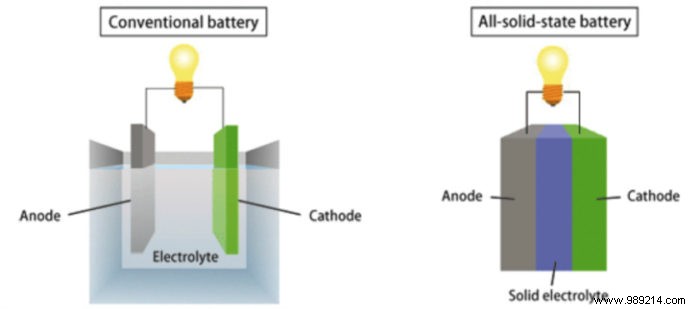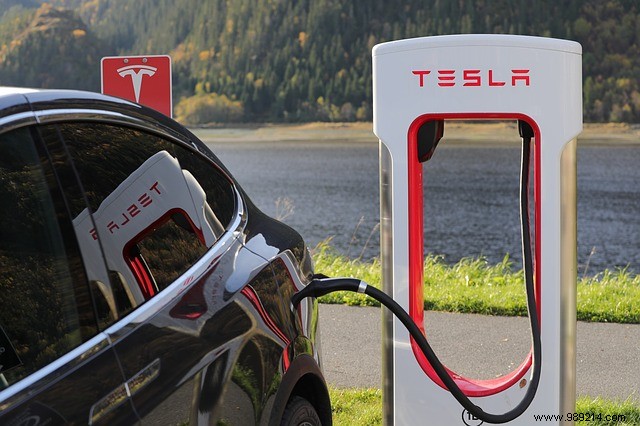The big difference between solid-state batteries and other types of batteries is the use of solid electrolytes, rather than the liquid electrolytes used in other batteries. Lithium-ion batteries have seen technological advances, but experts widely believe that lithium-ion technology has reached the limits of its effectiveness. The next step into the future requires a different type of battery, and that's where solid-state batteries come in.
SummaryHow does a battery work?How are modern batteries better?How are solid state batteries better?What are the uses of solid state batteries?Solid-state batteries are smaller, lighter and offer higher power density than lithium-ion batteries based on liquid electrolytes. The main challenge in their widespread adoption has been the search for a solid electrolyte with sufficient conduction capacity for large batteries, as well as a manufacturing method that allows economies of scale.
All batteries have three main parts:the anode, the cathode and the electrolyte. A battery works because charged ions want to travel from cathode to anode through the electrolyte. This happens because carefully chosen battery components create a chemical reaction that produces free electrons. As a result, a positive charge builds up on the cathode of the battery. This attracts negatively charged free electrons from the anode. These free electrons want to travel from the anode to the cathode. As they do, they power your device.

The most suitable electrolyte to replace lithium-ion batteries is a sodium-based glass electrolyte. According to the researchers, a glass electrolyte produces a battery with three times the energy density of a lithium-ion battery. The sodium needed to make these batteries is plentiful. This significantly reduces the environmental impact of battery production.

Solid-state batteries improve on lithium-ion batteries by using a solid electrolyte instead of a liquid or polymer electrolyte. It turns out that this change improves almost all the characteristics of the battery. Solid state batteries tick all the boxes for our fantastic battery technology. They are light in weight, have a low environmental impact, use many components, are less likely to catch fire and offer more power.
The only problem is the manufacturing process. We are always looking to manufacture these batteries at a lower cost and on a large scale. Currently, solid-state batteries are too expensive for widespread adoption. Luckily, we're pretty good at finding new ways to make things more efficient. Solid-state batteries should eventually give way to economies of scale and be widely adopted.

Solid-state batteries can improve just about any device that contains a battery. They are particularly attractive to electric car manufacturers. Companies like Tesla basically design a car around the battery. It is the most important component, defining most of the characteristics of the car. Industry analysts predict that the electric car will only be widely adopted when the distance traveled between charges meets or exceeds that of gasoline-powered cars. Solid-state batteries just might be the ticket to that future.
Image credit:Battery with Polymer Separator